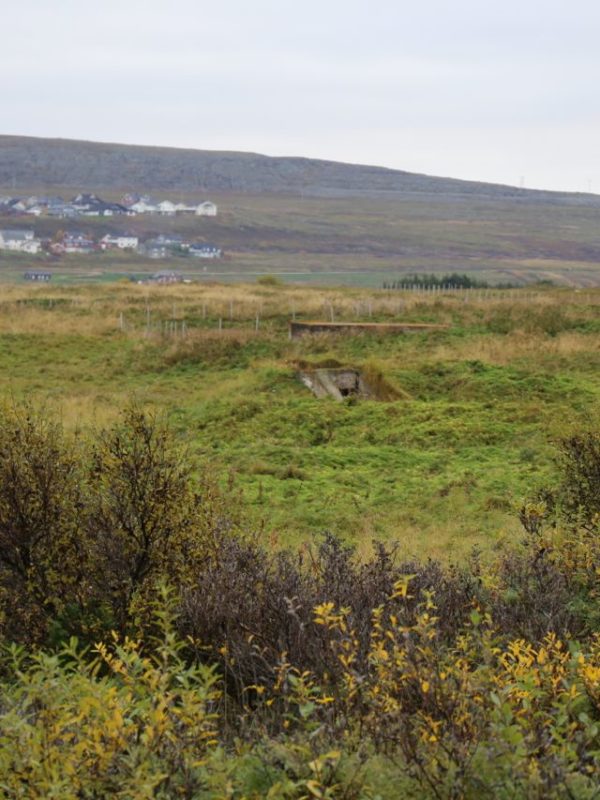![]() Vadsøya kulturpark ble åpnet i 1997 som del av Fotefar mot nord-prosjektet. Vadsøya har en mengde kulturminner fra eldre og nyere tid. Ved øyas nordøstre strand finner du sporene etter været som var Vadsø bys forløper; et bosettingsområde omtalt som en av de best bevarte «middelalderbyer» i Norge.
Vadsøya kulturpark ble åpnet i 1997 som del av Fotefar mot nord-prosjektet. Vadsøya har en mengde kulturminner fra eldre og nyere tid. Ved øyas nordøstre strand finner du sporene etter været som var Vadsø bys forløper; et bosettingsområde omtalt som en av de best bevarte «middelalderbyer» i Norge.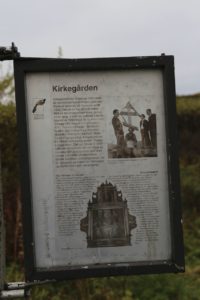
Bosettingsspor fra middelalderen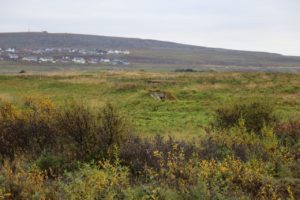
Vadsøya ble bosatt ved midten av 1400-tallet. På øyas nordøstre strand er det tufter etter torvhus, som vises som tydelige voller og forsenkninger i terrenget. Tuftene er godt bevart fordi øya ble fraflyttet på 1600-tallet, og grunnen ble aldri bebygd igjen. Befolkningen flyttet over sundet til fastlandet der Vadsø ligger i dag.
Øya var tingsted og kirkested, og været var et av de største i Finnmark i sin tid. På det meste bodde det omlag 250 mennesker her. Arkeologiske funn har vist at fisket var viktig, og at øyboerne hadde langveis kontakter og drev handel med verden utenfor.
Ved inngangen til kulturparken ses sporene etter kirkegården som hørte til været. Her stod det også ei tømmerkirke på 1500-tallet. På 1700- og 1800-tallet ble kirkegården benyttet av russiske handelsmenn og sjøfolk, og ble derfor kalt «russekirkegården».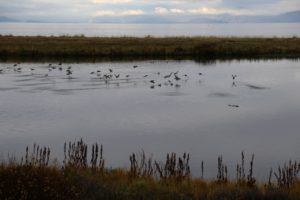
Luftskipsmasta
Luftskipsmasta ble konstruert av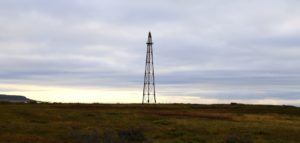 italienske Umberto Nobile. Den fungerte som landingsplass i forbindelse med Roald Amundsens ferd over Nordpolen med luftskipet «Norge» i 1926. Luftskipet «Italia» med Nobile som kaptein mellomlandet også her i 1928.
italienske Umberto Nobile. Den fungerte som landingsplass i forbindelse med Roald Amundsens ferd over Nordpolen med luftskipet «Norge» i 1926. Luftskipet «Italia» med Nobile som kaptein mellomlandet også her i 1928.
Krigsminner
I kulturparken finnes mange krigsminner fra tysk okkupasjon under andre verdenskrig. Rundt Vadsø ble flere mindre anlegg reist, til nærforsvar av byen og som ledd i befestningen langs Varangerfjorden. Her er rester etter kanonstillinger, bunkere, løpe- og skyttergraver.
Fugleliv på øya
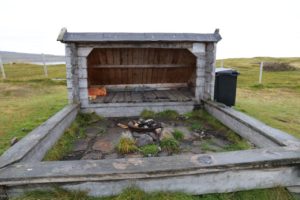 Vadsøya og Vadsøysundet er et fredet naturvernområde med et rikt og variert fugleliv, av særlig ender og vadefugler. I sundet overvintrer den sjeldne stelleranda, som på våren trekker til Sibir. Det er også observert andre sjeldne arter som svømmesnipe, sothøne, alaskasnipe, fjellmyrløper og pola
Vadsøya og Vadsøysundet er et fredet naturvernområde med et rikt og variert fugleliv, av særlig ender og vadefugler. I sundet overvintrer den sjeldne stelleranda, som på våren trekker til Sibir. Det er også observert andre sjeldne arter som svømmesnipe, sothøne, alaskasnipe, fjellmyrløper og pola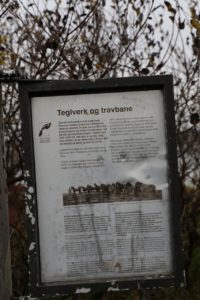 rsvømmesnipe.
rsvømmesnipe.
Om kulturstien
Kulturstien er ca 1,8 km lang og går i flatt terreng. Det er tilrettelagt for rullestol og barnevogn, og langs stien er det informasjonstavler som forteller om kulturminnene og fuglelivet på øya. Museet har bygget en gapahuk med bålplass like sør for luftskipsmasta. Den kan fritt benyttes av alle som ønsker det. Brensel og rydding må gjestene selv stå for.
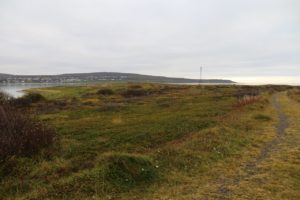
![]() Vadsøya Cultural Park was opened in 1997 as part of Footprints in the North project. Vadsøya has a plethora of cultural relics from ancient and modern times. At the island’s northeastern beach you will find traces of the weather which was Vadsø bys precursor; a settlement area referred to as one of the best preserved «medieval cities» in Norway.
Vadsøya Cultural Park was opened in 1997 as part of Footprints in the North project. Vadsøya has a plethora of cultural relics from ancient and modern times. At the island’s northeastern beach you will find traces of the weather which was Vadsø bys precursor; a settlement area referred to as one of the best preserved «medieval cities» in Norway.
Settling Track medieval
Vadsøya were settled by mid-1400s. On the island’s northeastern beach is the remains of peat, which appear as clear mounds and depressions in the terrain. The site is well preserved because the island was abandoned in the 1600s, and the reason was never undeveloped again. The population moved across the strait to the mainland where Vadsø is today.
The island was stuff place and a church, and the weather was one of the largest in Finnmark in his time. At the most there were about 250 people here. Archaeological finds have shown that fishing was important and that the islanders had afar contacts and traded with the outside world.
At the entrance to the culture park seen traces of the cemetery that belonged to the weather. Here was also a wooden church in the 1500s. At the 1700 and 1800s the cemetery used by Russian merchants and sailors, and was therefore called «Russian cemetery.»
blimps Masta
Blimps Masta was constructed by Italian Umberto Nobile. It served as landing place in conjunction with Roald Amundsen’s journey over the North Pole with the airship «Norway» in 1926. The airship «Italia» with Nobile as captain between the country also here in 1928.
war Memories
In cultural park’s many war memories of German occupation during World War II. Around Vadsø were several smaller facilities erected to nærforsvar of the city and as part of the fortification along the Varanger Fjord. Here are the remains of gun emplacements, bunkers, running and trenches.
The birdlife on the island
Vadsøya and Vadsøysundet is a protected conservation area with a rich and varied birdlife, particularly ducks and waders. In the strait overwinter the rare Steller’s eider, as spring draws to Siberia. It is also observed other rare species such as red-necked phalarope, coot, alaska snipe, broad- billed sandpiper and gray phalarope.
About culture trail
Heritage trail is about 1.8 km long and goes in flat terrain. There are wheelchair and stroller, and along the path there are information boards about cultural heritage and bird life on the island. The museum has built a shelter with a bonfire just south of the airship mast. It can be freely used by anyone who wants it. Fuels and clearing guests must even stand.
Google trans.

